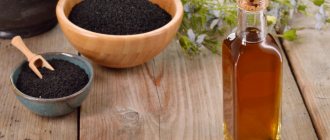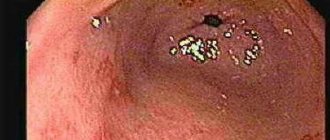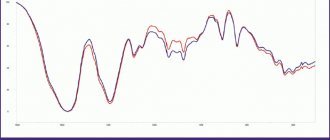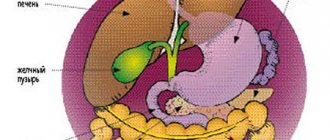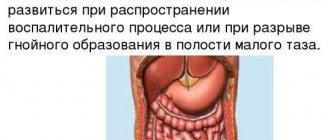Gastritis is divided into several stages; as it develops and without treatment, it flows from one form to another.
The first stage of the disease is superficial gastritis. This form of gastritis is considered the most harmless: inflammation of the gastric mucosa is superficial, there are no focal lesions, and the deep tissues of the stomach and duodenum are not affected. The disease occurs in most cases of treatment and does not fall into the category of dangerous and complex. But at this stage, gastritis must be treated immediately, since it can progress to the next stage, becoming a chronic condition. To prevent this, you need to contact a gastroenterologist in a timely manner.
Pathogenesis
The pathogenesis is based on a long-term inflammatory process in the gastric mucosa, which leads to its gradual structural restructuring. Long-term inflammation is triggered in response to a number of factors, both internal and external.
The inflammatory process develops as a round cell infiltration of neutrophils and other cells of the gastric mucosa involved in its immune system . Against the background of a long process and subsequent structural restructuring, dysregenerative processes are formed, which leads to dystrophy and atrophy . Gastric dysfunction is manifested by either hypo- or achlorhydria and gastric achylia .
Helicobacter pylori infection occupies an important place in the formation of the inflammatory process. The Correa cascade is well demonstrated by changes in the mucosa under the negative influence of H. pylori.
Classification
According to the form of the disease, the disease is classified into:
- Acute superficial gastritis.
- Chronic superficial gastritis . In the absence of timely adequate therapy, the chronic form can turn into atrophic, which is characterized by a high risk of malignancy (transition to oncological forms).
At the location of the inflammatory process:
- the pathological process is localized in the outlet part of the stomach (antrum), which is why it got its name - antral gastritis ;
- damage to the body of the stomach;
- damage to the working day of the body of the stomach - fundic;
- damage to all parts of the stomach - pangastritis .
By scale they distinguish:
- Diffuse superficial gastritis . The diffuse type is characterized by the spread of the inflammatory process throughout the mucous membrane of the organ.
- Focal superficial gastritis . The focal form is characterized by damage to only certain areas of the stomach.
Classification by reason of occurrence:
- Dosage form . Develops as a side effect in response to taking certain medications.
- Endogenous form . It occurs in response to the influence of several internal factors at once.
- Bacterial form . It is formed as a result of the entry into the body of a bacterium such as Helicobacter pylori. According to statistics, in 85% of cases it is this microorganism that causes the development of gastritis.
- Reflux gastritis . It develops in response to the entry of highly acidic and bile from the duodenum into the stomach. This form is considered the most dangerous, because characterized by gradual metaplasia - the transition of cells into a foreign form, and the further development of the oncological process.
Classification by acidity level:
- with normal secretion;
- with increased secretion (hyperacid);
- with reduced secretion (hypoacid).
Publications in the media
Chronic gastritis is a long-term disease characterized by the development of a number of morphological changes in the gastric mucosa and accompanied by various disorders of its basic functions. Prevalence. 50–80% of the entire adult population, the incidence of chronic gastritis increases with age. Incidence of gastritis and duodenitis: 287.2 per 100,000 population in 2001.
Classification
• By etiological factor • Microbial: Helicobacter pylori, etc. • Non-microbial •• Autoimmune •• Alcoholic •• Post-resection •• Caused by exposure to NSAIDs •• Caused by exposure to chemical agents • Unknown factors, incl. microorganisms.
• By type • Non-atrophic (type B, superficial, diffuse antral, hypersecretory) • Atrophic (type A, diffuse gastric body, associated with B12-deficiency anemia) • Special forms •• Chemical •• Radiation •• Lymphocytic •• Giant hypertrophic ( Ménétrier's disease, adenopapillomatosis) •• Granulomatous •• Eosinophilic •• Other infectious.
• By localization • Antral gastritis • Body gastritis • Pangastritis.
Etiology • Chronic non-atrophic gastritis in 85–90% of cases is caused by Helicobacter pylori • The development of chronic atrophic (autoimmune) gastritis is associated with the genetically determined production of autoantibodies to the lining cells of the gastric mucosa • The most common causes of chemical (reactive) gastritis are bile reflux and long-term use of NSAIDs • The etiology of eosinophilic gastritis is unknown, some patients have a history of bronchial asthma, eczema and other allergic diseases • Granulomatous gastritis is found in 10% of patients with sarcoidosis, 7% of patients with Crohn’s disease, with tuberculosis, mycoses, foreign bodies in the stomach • Etiology of giant hypertrophic gastritis is unknown.
Clinical picture
• Chronic non-atrophic gastritis • The pain syndrome often resembles that of duodenal ulcer (pain in the epigastric region that occurs on an empty stomach, but is usually less intense). The pain can be acute, cramping or aching, not intense; sometimes occur soon after eating • Dyspeptic syndrome - heartburn, sour belching, less commonly nausea, vomiting of gastric contents.
• Atrophic gastritis • Often combined with B12-deficiency anemia, thyroiditis, thyrotoxicosis, primary hypoparathyroidism • Sometimes the disease is latent • The most common manifestations are heaviness in the epigastric region after eating, a feeling of overeating, fullness of the stomach, belching of food and air, unpleasant taste in the mouth , loss of appetite, possible flatulence, unstable stool.
• Chemical (reactive) gastritis • Characterized by a triad of symptoms: pain in the epigastric region, intensifying after eating, vomiting with bile, bringing relief, weight loss.
• Giant hypertrophic gastritis • Pain in the epigastric region of varying intensity, often aching, occurs after eating and is accompanied by a feeling of heaviness in the stomach • Vomiting and diarrhea are possible; appetite is often reduced, sometimes even to the point of anorexia • In most patients, body weight decreases (by 10–20 kg) • In 25–40% of patients, peripheral edema is detected due to significant loss of protein with gastric juice (more than 8 g/day) • Gastric bleeding from erosions • Gastric carcinoma develops in 10% of cases.
Diagnostics
• OAC: B12-deficiency anemia in chronic gastritis type A
• Stool analysis: possible presence of hidden blood, as well as undigested food debris with reduced secretory activity of the stomach.
• X-ray examination does not allow diagnosing the main forms of chronic gastritis; but with its help it is possible to identify ulcers, cancer, polyposis, duodenal gastric reflux, giant hypertrophic gastritis, chronic obstruction of the duodenum • Chronic obstruction of the duodenum - delay of the contrast mass in the intestinal lumen for more than 45 s, expansion of the intestinal lumen, the presence of duodenum gastric reflux •• Giant hypertrophic gastritis (Menetrier's disease) - pronounced thickening of the folds of the mucous membrane in a limited area (with a local variant) or throughout the stomach (with a diffuse variant). The stomach wall in the affected area is elastic, peristalsis is visible.
• FEGDS •• Non-atrophic (superficial) gastritis: the mucous membrane is shiny (sometimes with a coating of fibrin), edematous, hyperemic, submucosal hemorrhages •• Atrophic gastritis: the mucous membrane is thinned, pale gray in color, with translucent blood vessels, the relief is smoothed •• Reflux -gastritis: the pylorus is gaping, the gastric mucosa is hyperemic, edematous; bile is present in the stomach •• Giant hypertrophic gastritis: there is a large amount of mucus in the stomach, the mucous membrane is easily vulnerable, erosions and hemorrhages are often found.
• Study of the secretory function of the stomach •• Chronic non-atrophic gastritis, reflux gastritis: the secretory function is normal or increased •• Chronic atrophic gastritis, giant hypertrophic gastritis: the secretory function of the stomach is reduced.
• Detection of Helicobacter pylori •• Invasive methods: it is necessary to perform FEGDS with a biopsy of the gastric mucosa; at least five biopsies are taken (two each from the antrum and fundus and one from the angle of the stomach). To confirm the success of eradication, the study is carried out no earlier than the 5th week after completion of the course of treatment ••• Bacteriological method ••• Histological method (detection of bacteria during microscopic examination of stained preparations) ••• Biochemical method (urease test) •• Non-invasive tests •• •Immunological methods (detection of antibodies to Helicobacter pylori) •••Breath test ••PCR diagnostics in biopsy samples of the gastric mucosa (invasive method) and in the patient’s feces (non-invasive method).
• Detection of antibodies to parietal cells and intrinsic factor and hypergastrinemia are a sign of atrophic autoimmune gastritis.
• Floor manometry of the upper gastrointestinal tract: with reflux gastritis, an increase in pressure in the duodenum to 200–240 mm water column is detected. (normally - 80–130 mm water column).
TREATMENT
Chronic non-atrophic gastritis
• Diet: for hypo- and achlorhydria, diet No. 2 is prescribed, for hyperacid conditions - diet No. 1.
• For gastritis caused by Helicobacter pylori - eradication (course of therapy - 1-2 weeks) •• Triple therapy ••• bismuth tripotassium dicitrate 120 mg 4 times / day for 28 days ••• metronidazole 200 mg 4 times / day in for 10–14 days ••• tetracycline 500 mg 4 times/day for 10–14 days •• Quadra-therapy ••• omeprazole 20 mg 2 times/day ••• tripotassium bismuth dicitrate 120 mg 4 times/day •• • tetracycline 500 mg 4 times a day ••• metronidazole 500 mg 3 times a day.
• In the absence of Helicobacter pylori and increased secretory function of the stomach •• Antacids, preferably non-absorbable, 1-2 hours after meals 3-4 times / day and before bed • Selective m-anticholinergic blockers (pirenzepine - 50 mg 2 times / day) • Blockers Histamine H2 receptors: ranitidine (150 mg 2 times a day orally or intramuscularly), famotidine (20 mg 2 times a day orally or intravenously) •• H+,K+-ATPase blockers (proton pump blockers) ) - omeprazole, rabeprazole 20 mg 2 times / day, lansoprazole 30 mg 2 times / day.
• Drugs that protect (envelop) the mucous membrane •• Sucralfate •• Bismuth tripotassium dicitrate (also has an antimicrobial effect against Helicobacter pylori).
Chronic atrophic gastritis • Drug therapy is carried out only during the period of exacerbation • Replacement therapy for secretory gastric insufficiency: natural gastric juice, pepsidil, hydrochloric acid with pepsin, acidin-pepsin (these drugs are contraindicated in the presence of erosions of the mucous membrane) • Replacement therapy for decreased excretory function of the pancreas glands (cholenzyme, pancreatin + bile components + hemicellulase, pancreatin, panzinorm forte) • Treatment of B12-deficiency anemia • Herbal medicine: herbal remedies that have an anti-inflammatory effect - infusion of plantain leaves, chamomile, mint, St. John's wort, valerian (1 tbsp. per glass of water) orally, 1/3–1/4 glass 3–4 times a day before meals for 3–4 weeks; plantain juice 1 tbsp. or plantaglucide 0.5–1 g 3 times a day • Drugs that improve tissue trophism and enhance reparative processes: nicotinic acid (1% solution IV from 1 to 10 ml for 10 days or IM 3–5 ml 20 days), solcoseryl 1–2 ml IM 20 days, inosine 0.2 g 3 times a day 40 minutes before meals 20–30 days, thiamine, pyridoxine, folic acid • Blockers of central and peripheral dopamine receptors for pain and severe dyspeptic symptoms (see below Reflux gastritis).
Reflux gastritis • Treatment is aimed at normalizing gastrointestinal motility and binding bile acids • To prevent the reflux of duodenal contents into the stomach, dopamine receptor blockers are prescribed (domperidone, metoclopramide, cisapride 10 mg 3 times a day 30 minutes before meals for 2-3 weeks ) • To neutralize bile acids that have a damaging effect on the gastric mucosa, chenodeoxycholic and ursodeoxycholic acids are used • To protect the mucous membrane from bile acids - antacids in the usual daily dose (aluminum-containing antacids have the ability to bind bile acids, so they are more effective).
Giant hypertrophic gastritis • Long-term treatment (2-3 months) • High-calorie, protein-rich diet • Antisecretory therapy • For treatment-resistant hypoproteinemia, repeated bleeding, surgical treatment (gastric resection) is indicated.
ICD-10 • K29 Gastritis and duodenitis
Application. Eosinophilic (allergic) gastroenteritis is a chronic disease characterized by predominantly eosinophil infiltration of the lamina propria of the gastric antrum mucosa, epithelium, pit glands with the formation of eosinophilic abscesses; characterized by damage to the small and large intestines, esophagus; often accompanies allergic diseases. Clinical picture: chronic diarrhea, abdominal pain, nausea, vomiting, weight loss, eosinophilia. Treatment: exclusion of allergy-provoking foods; diet No. 1; GCs provide long-term remission. ICD-10. K52.8 Other specified non-infectious gastroenteritis and colitis.
Causes
Superficial gastritis develops as a result of prolonged exposure to several negative factors that damage the gastric mucosa.
Main causes of gastritis:
- consumption of alcohol-containing products;
- smoking, nicotine and cigarette tar entering the body;
- taking medications such as NSAIDs, sulfonamides, salicylates;
- non-compliance with the diet, consumption of smoked, salty, fatty foods; excessive presence of fast food in the diet; dry food; binge eating;
- consumption of low-quality, expired products;
- poor chewing of food;
- frequent drinking of coffee on an empty stomach;
- too long breaks between meals;
- excessive salt intake;
- work in hazardous industries (inhalation of lead, microparticles of coal dust);
- love of highly carbonated drinks;
- frequent stress;
- hormonal instability;
- infection with H. pylori from another person;
- ingestion of various acids and alkalis into the stomach.
Reasons that provoke the development of a moderate form of superficial gastritis:
- malfunctions of the immune system;
- hereditary predisposition;
- untreated acute gastritis;
- the presence of infectious diseases that occur in severe form;
- dysfunctional disorder in the work of the sphincter muscle between the stomach and duodenum;
- atherosclerosis , vasculitis and other pathological conditions that disrupt the normal blood circulation of the stomach;
- food poisoning;
- diseases of the renal system;
- pathology of lung tissue, heart;
- anemia;
- rheumatism;
- gout , diabetes mellitus and other endocrine disorders;
- helminthic infestations;
- infection with the causative agent of salmonellosis , dysentery and rotavirus infection .
Symptoms of superficial gastritis
Superficial gastritis can manifest itself symptomatically only during certain periods, as a result of the influence of negative factors on the gastric mucosa.
Main symptoms of the disease:
- a feeling of heaviness in the epigastric region immediately or some time after eating;
- a feeling of compression, burning in the stomach, a feeling of fullness in the abdomen;
- in addition to the feeling of hunger, patients note mild nausea;
- aching, dull pain in the stomach area that occurs immediately after eating, as well as at night;
- the appearance of heartburn after eating “heavy”, fatty foods and consuming alcohol-containing products;
- belching with sour contents;
- noticeable pallor of the skin;
- pain on palpation in the stomach area;
- stool disorders, diarrhea ;
- the appearance of bad breath;
- decreased appetite.
Patients also complain of severe pain in the epigastric region, which occurs in response to eating spicy or too hot food. Most often, this indicates involvement of the duodenum in the inflammatory process.
Below are symptoms indicating the transition of superficial gastritis to an atrophic form:
- refusal to eat, poor appetite;
- noticeable weight loss;
- diarrhea syndrome;
- the appearance of a white coating on the root of the tongue;
- frequent belching of air, mainly in the morning;
- constant nausea;
- vomit;
- severe weakness throughout the body.
What causes gastritis?
According to recent scientific research, the cause of gastritis is one of the types of bacteria - Helicobacterium. It causes selective damage to the mucous membrane followed by its destruction. In combination with other predisposing factors, helicibacter leads to gastritis, and subsequently to gastric ulcers. Among these factors is alcohol abuse. Alcohol causes chemical damage to the mucous membrane. At its core, this is the same chemical burn that a person can get if they accidentally ingest an acid, alkali, or ordinary vinegar. Taking certain types of medications, antibiotics and anti-inflammatory drugs (aspirin, diclofenac) can provoke gastritis. This happens because such drugs affect the body's defense mechanisms at the molecular level. Another reason for the disease is an incorrect rhythm of life. For example, dry food can lead to permanent mechanical microdamage to the gastric mucosa, too spicy or salty food is equivalent to direct chemical exposure, very hot or too cold food can lead to a thermal burn. Considering such a variety of causes, we can confidently say that for the majority of patients the cause was a combination of the damaging factors listed above.
Tests and diagnostics
If the symptoms described above appear, it is recommended to immediately consult a specialist to carry out diagnostic measures and identify the true cause of poor health.
Basic diagnostic methods:
- Blood test: general and biochemical . Allows you to assess the functional state of internal organs.
- Coprogram . Stool is collected to identify bloody inclusions and signs of internal bleeding .
- X-ray examination of the stomach with a contrast agent . Allows you to identify ulcerative defects , hernias and neoplasms.
- Collection of gastric juice . In dynamics, the study allows you to evaluate secretory activity.
- Fibrogastroduodenoscopy . Thanks to a comprehensive research method, it is possible to assess the condition of the mucous membrane of not only the stomach, but also the duodenum.
- Study of a biopsy of the gastric mucosa. It is possible to identify H. pylori and exclude/confirm cancer.
Prevention
General preventive measures that will help not only avoid the development of superficial gastritis, but also increase the period of remission in patients with an already established diagnosis:
- Changing your lifestyle (observing work, sleep and rest schedules), giving up bad habits.
- If negative symptoms appear, do not self-medicate and consult a specialist in a timely manner. If necessary, issue a sick leave certificate.
- Avoid stressful situations, strive to develop stress resistance.
- Try to eat foods whose temperature is approximately +37 degrees. Products above +60 degrees and below +15 degrees are prohibited.
- Try to consume foods in liquid and crushed form. Preference is given to porridge-like foods and purees.
- Food should be taken 6-8 times a day, and long periods of fasting should not be allowed, after which there is a high risk of overeating.
- The last meal is 2 hours before going to bed.
- The amount of food consumed per day should not exceed 3 kg (30% for breakfast, 15% for second breakfast, 40% for lunch and 15% for dinner).
Gastritis in children
Unfortunately, this disease also occurs in children, most often in acute form. The cause is usually random factors: food poisoning, infectious disease or poor diet. Particular attention should be paid to the last point, since its importance increases sharply when the child goes to school and his daily routine may be disrupted. Symptoms in children are also more pronounced: severe vomiting, indigestion, lack of appetite.
The treatment of this disease, both in adults and in children, is the same. This is a complex process that may include not only taking medications, but also strict adherence to a diet and daily routine. For adults, this also comes with other restrictions: abstaining from alcohol, smoking, and the usual spicy foods. But the prize in this difficult competition will be recovery and a full, joyful life for many years to come.
Diet for superficial gastritis
Diet for superficial gastritis of the stomach
- Efficacy: therapeutic effect after 10 days
- Duration: a month or more
- Cost of products: 1500-1600 rubles. in Week
Patients suffering from chronic superficial gastritis are recommended to follow a special gentle diet, which completely excludes the consumption of dishes and products that have a negative, irritating effect on the gastric mucosa (soda, fast food, smoked meats).
Preference in nutrition should be given to dishes made from lean meats. Cereals should be consumed only in boiled form, vegetables must undergo mandatory heat treatment. Soft-boiled eggs, non-acidic kefir, low-fat pureed cottage cheese, milk, jelly and herbal teas are allowed for consumption.
Consequences and complications
The early form of the disease is antral superficial gastritis. In the absence of adequate treatment, non-compliance with diet therapy and refusal to lead a healthy lifestyle, certain complications may develop:
- formation of pangastritis , in which the inflammatory process spreads to all parts of the stomach;
- involvement of the duodenum in the pathological process, erosive lesions, bulbitis , acute gastroduodenitis ; in advanced cases, a non-scarring open ulcerative defect is diagnosed;
- development of reflux with the reflux of contents from the duodenum into the stomach, and from the stomach into the esophagus;
- development of colitis , adhesive disease ;
- bleeding from ulcerative defects and erosions.
Treatment
How to treat superficial gastritis? First of all, you need to completely remove fatty and spicy foods from your diet, quit smoking, minimize alcohol, and eliminate dry food. It is advisable to forget about coffee and strong teas. If your nerves are severely shaken, you need to consult a neuropsychiatrist. This is necessary for recovery, since the stomach may refuse to work at all under constant stress and mental overload. It is necessary to eat in small portions and move more after meals to improve gastric motility. In this case, any treatment of gastritis should be supervised by a doctor. Even if therapy and drug intervention are not required at this stage, it is necessary to consult a specialist, otherwise self-medication will aggravate the condition and complicate the picture of the disease.
